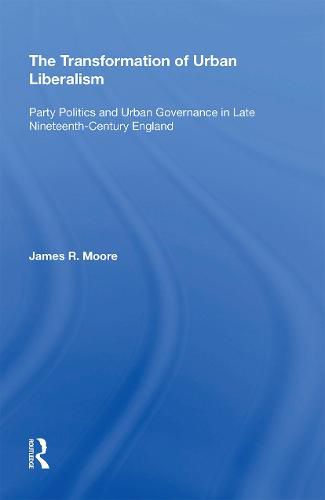Readings Newsletter
Become a Readings Member to make your shopping experience even easier.
Sign in or sign up for free!
You’re not far away from qualifying for FREE standard shipping within Australia
You’ve qualified for FREE standard shipping within Australia
The cart is loading…






The Transformation of Urban Liberalism re-evaluates the dramatic and turbulent political decade following the ‘Third Reform Act’, and questions whether the Liberal Party’s political heartlands - the urban boroughs - really were in decline. In contrast to some recent studies, it does not see electoral reform, the Irish Home Rule crisis and the challenge of socialism as representing a fundamental threat to the integrity of the party. Instead this book illustrates, using parallel case studies, how the party gradually began to transform into a social democratic organisation through a re-evaluation of its role and policy direction. This process was not one directed from the centre - despite the important personalities of Gladstone and Rosebery - but rather one heavily influenced by ‘grass roots politics’. Consequently, it suggests that late Victorian politics was more democratic and open than sometimes thought, with leading urban politicians forced to respond to the demands of party activists. Changes in the structure of urban rule produced new policy outcomes and brought new collectivist forms of New Liberalism onto the political agenda. Thus, it is argued that without the political transformations of the decade 1885-1895, the radical liberal governments of the Edwardian era would not have been possible.
$9.00 standard shipping within Australia
FREE standard shipping within Australia for orders over $100.00
Express & International shipping calculated at checkout
The Transformation of Urban Liberalism re-evaluates the dramatic and turbulent political decade following the ‘Third Reform Act’, and questions whether the Liberal Party’s political heartlands - the urban boroughs - really were in decline. In contrast to some recent studies, it does not see electoral reform, the Irish Home Rule crisis and the challenge of socialism as representing a fundamental threat to the integrity of the party. Instead this book illustrates, using parallel case studies, how the party gradually began to transform into a social democratic organisation through a re-evaluation of its role and policy direction. This process was not one directed from the centre - despite the important personalities of Gladstone and Rosebery - but rather one heavily influenced by ‘grass roots politics’. Consequently, it suggests that late Victorian politics was more democratic and open than sometimes thought, with leading urban politicians forced to respond to the demands of party activists. Changes in the structure of urban rule produced new policy outcomes and brought new collectivist forms of New Liberalism onto the political agenda. Thus, it is argued that without the political transformations of the decade 1885-1895, the radical liberal governments of the Edwardian era would not have been possible.